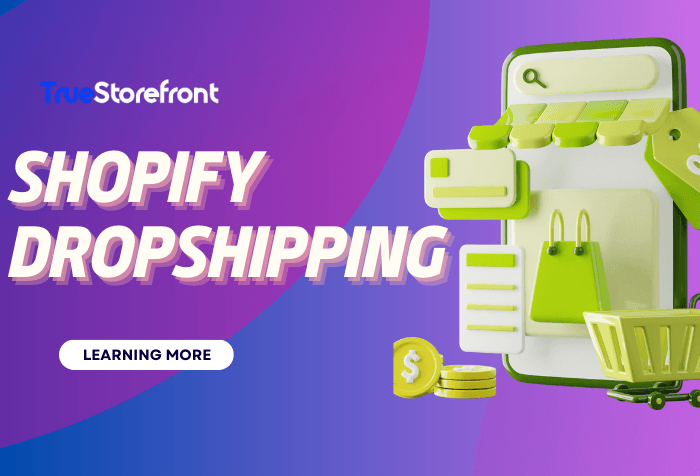Dropshipping is one of the most accessible business models for aspiring entrepreneurs, allowing you to sell products without holding inventory. With platforms like Shopify, it’s easier than ever to get started. This guide will walk you through everything you need to know about Shopify dropshipping, from setting up your store to mastering the challenges and growing a successful business.
I. What is Dropshipping?
Dropshipping is a business model where store owners sell products directly to customers without stocking inventory themselves. Instead, when you sell a product, you purchase the item from a third-party supplier who ships it directly to the customer. You never have to handle the product, making dropshipping a low-risk, low-investment business model.
1.1. How Does Dropshipping Work on Shopify?
On Shopify, dropshipping works seamlessly through various apps that integrate with suppliers. Here’s how it typically works:
-
You choose a Shopify plan and set up your store.
-
You use a dropshipping app like Spocket or DSers to source products.
-
When a customer orders from your Shopify store, the app automatically sends the order to your supplier, who then ships the product directly to the customer.
1.2. Why Shopify is Ideal for Dropshipping?
Shopify is the go-to platform for dropshipping for several reasons:
-
User-friendly Interface: No coding skills required, even beginners can build a professional-looking store.
-
Extensive App Ecosystem: Shopify’s app marketplace offers many dropshipping tools that help with product sourcing, pricing, and fulfillment.
-
Scalability: Shopify plans grow with your business, allowing you to scale easily.
1.3. Pros and Cons of Shopify Dropshipping
Pros:
-
Low Startup Costs: No need to invest in inventory upfront.
-
Flexibility: You can run your business from anywhere.
-
Product Variety: Dropshipping allows you to offer a wide range of products without holding stock.
-
Scalability: Easy to scale as your business grows.
Cons:
-
Lower Profit Margins: Because you don't buy products in bulk, profit margins can be slimmer.
-
Less Control: You have little control over the product quality, shipping times, and inventory levels.
-
Shipping Times: Depending on the supplier, shipping times can be lengthy, which may affect customer satisfaction.
-
High Competition: The barrier to entry is low, which means more competition in the market.
II. How to Start a Shopify Dropshipping Business?
Step 1: Find a Dropshipping Niche
- Select a niche that excites you and has market potential, like fitness gear or pet products. Use market research tools like social media and Google Trends to identify profitable dropshipping products. Analyze competitors to differentiate your offerings.
Step 2. Set Up a Shopify Store
1. Create a Shopify Account:
- Go to the Shopify website and sign up for a free trial. Choose a store name, and Shopify will automatically create your store URL.
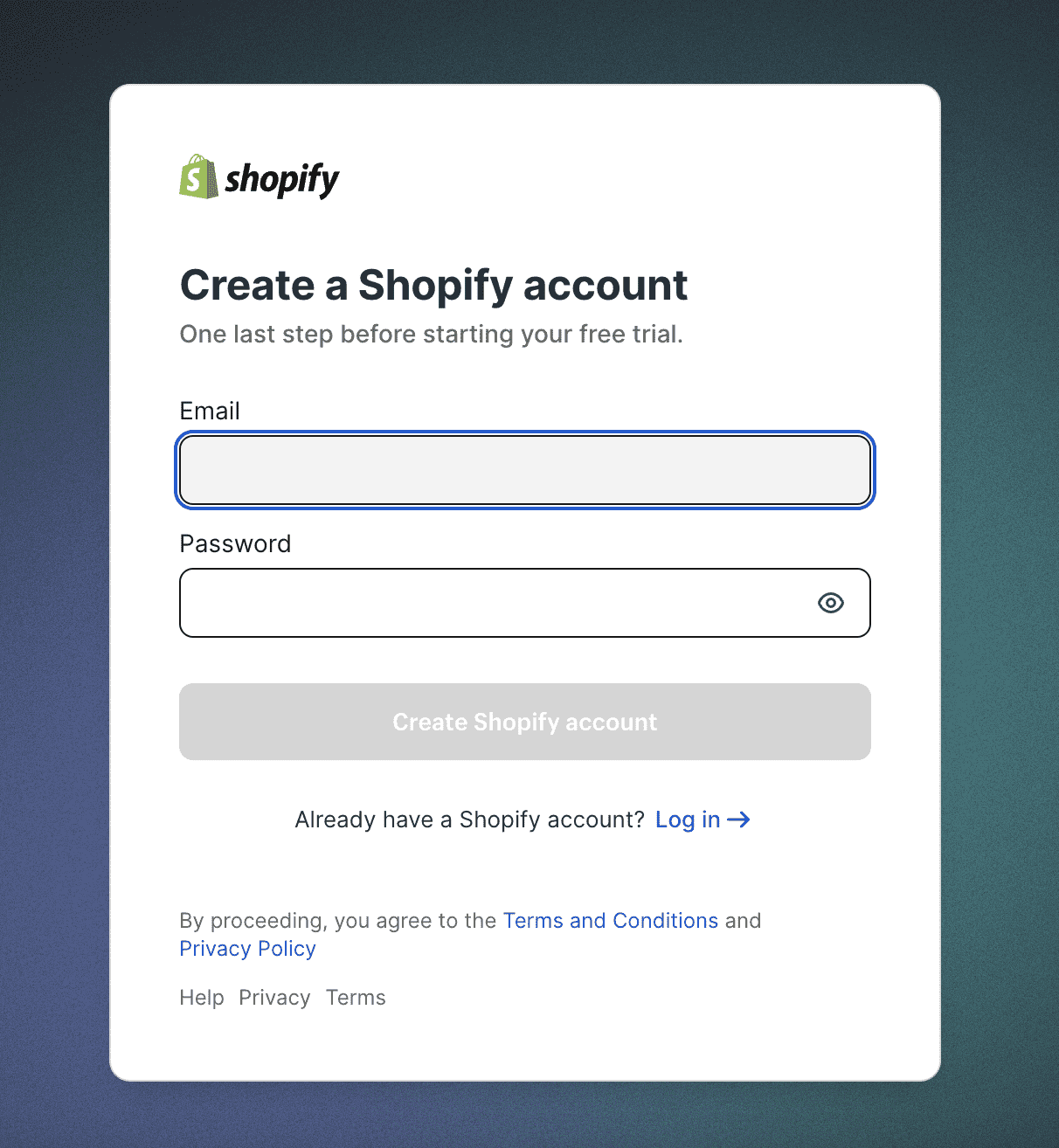
2. Choose a Store Theme:
- Shopify offers various free and paid themes. Choose one that matches your brand and products. Customize it by adding logos, colors, and fonts.
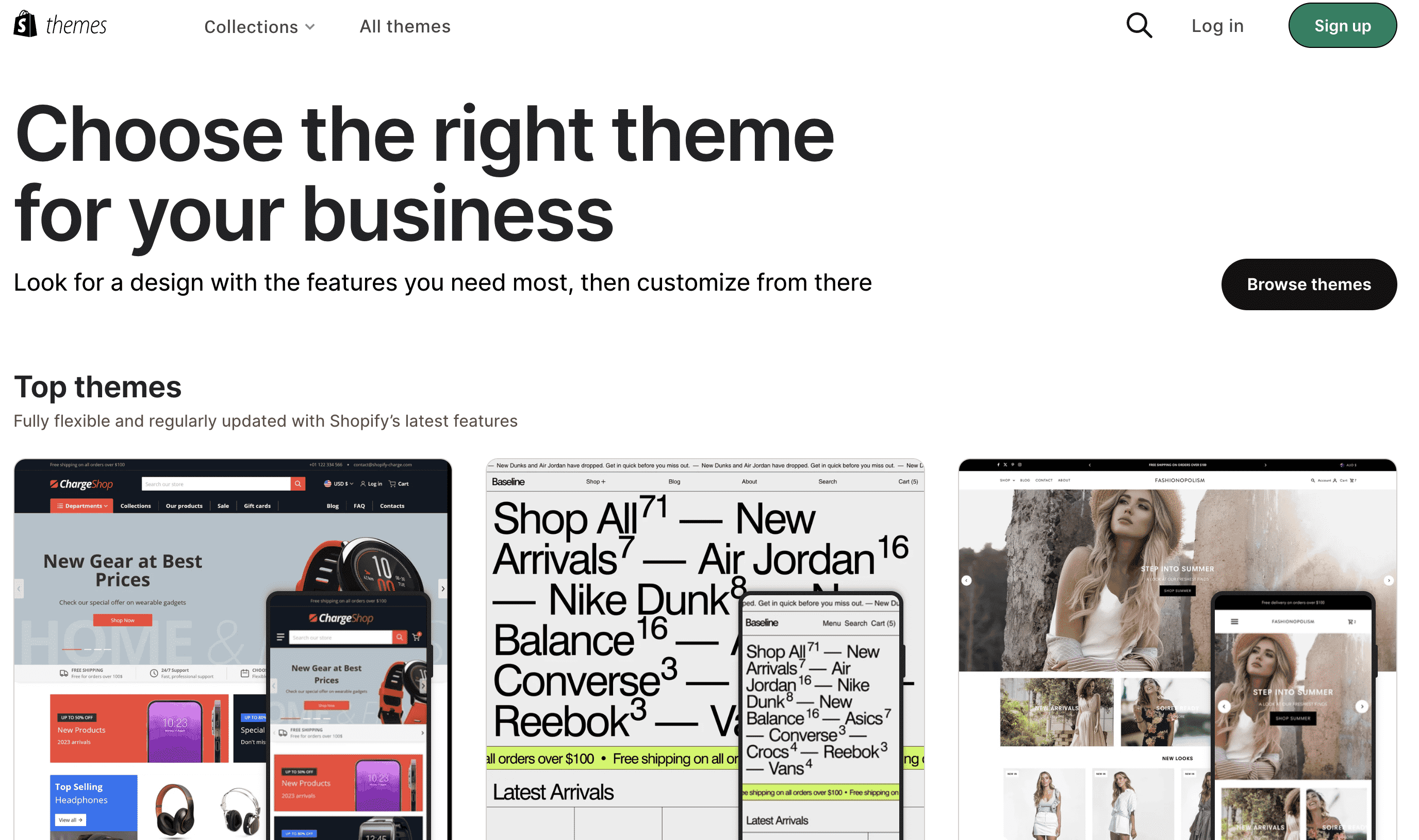
3. Install the App:
- Go to the Shopify App Store, search for the dropshipping app you prefer, and install it. Once installed, link your Shopify account to the app.
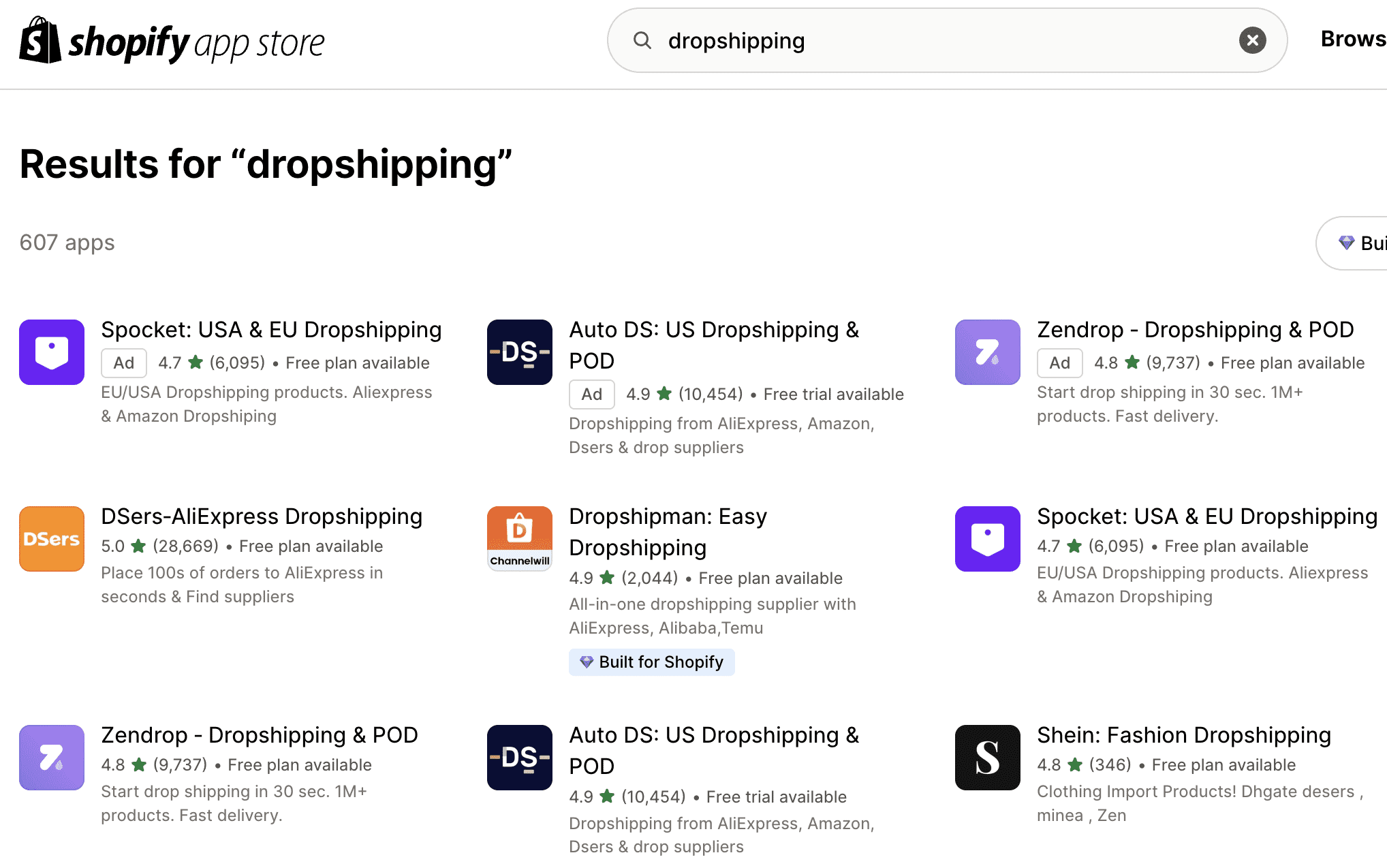
Step 3. Add Products to Your Store
1. Search for Products:
- Use your dropshipping app to browse products from suppliers. Look for trending items in your niche with good profit margins and reliable suppliers.
2. Import Products:
- Import selected products to your Shopify store with one click. The product information, images, and prices will automatically sync with your store.
3. Set Prices:
- Customize product pricing to ensure a profit margin, considering the cost of goods and shipping fees.
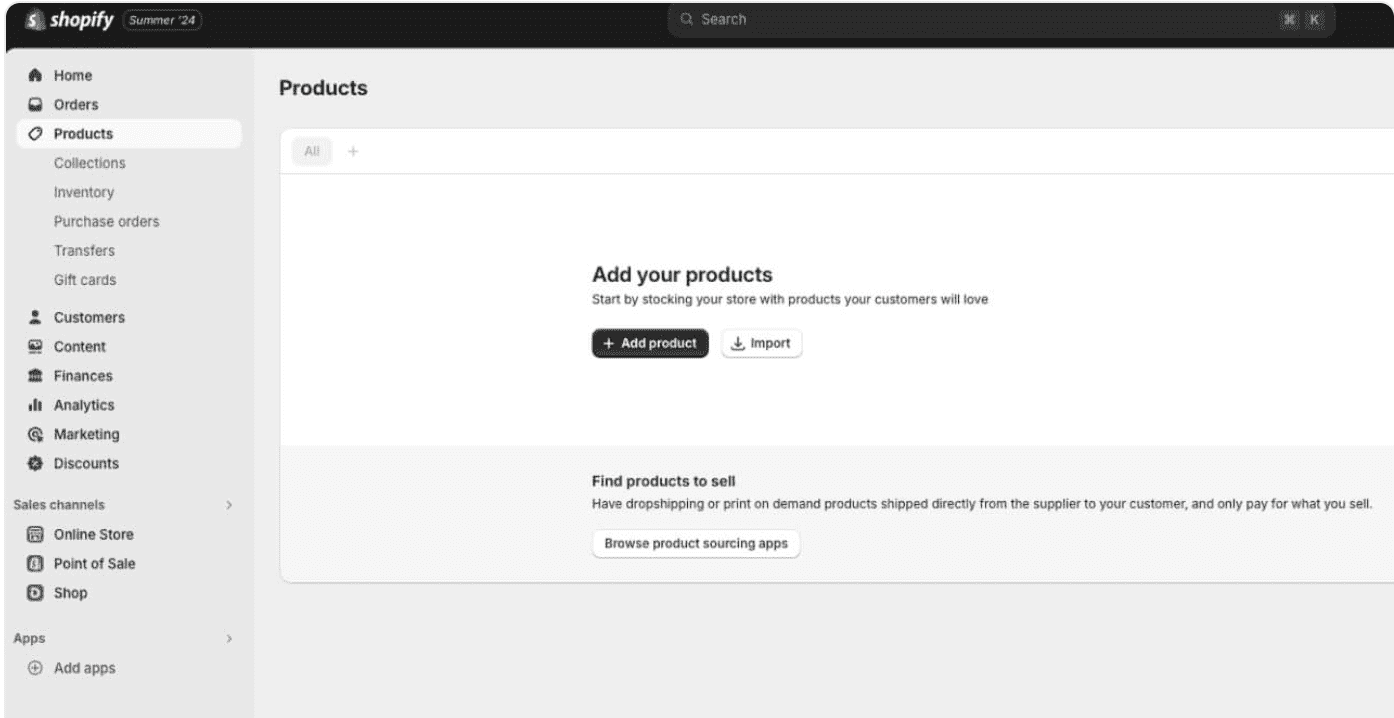
Step 4. Customize Your Store
- From your Shopify Admin, go to Sales Channels → Online Store → Themes and select a theme that fits your brand. Shopify offers various free and paid themes, which you can customize for different dropshipping niches, from clothing to pet supplies.
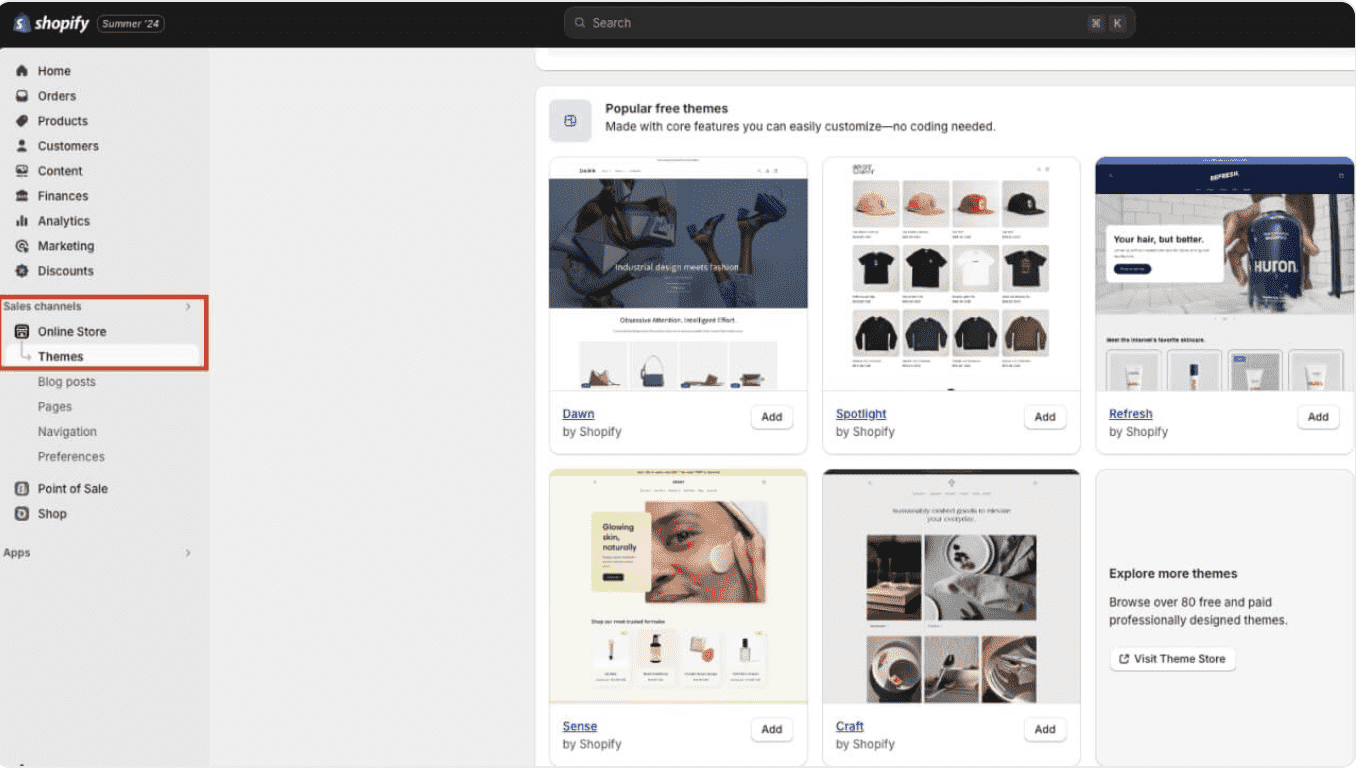
Step 5. Launch Your Store
1. Choose a Shopify Plan:
- After the free trial, pick a Shopify plan that suits your needs. For new dropshipping stores, the Basic Shopify Plan ($39/month) is usually enough.
2. Buy a Domain Name:
- Purchase a custom domain for your store (e.g., www.yourstore.com) to build brand credibility. Shopify allows you to buy and connect domains easily.
3. Launch Your Store:
- Double-check all settings, test the purchasing process, and then make your store live!
III. Best Shopify Dropshipping Apps
Choosing the right app can make or break your dropshipping success. Below is a comparison of some of the top Shopify dropshipping apps:
Read more: Best Shopify Dropshipping Apps for 2024
IV. Marketing a Shopify Dropshipping Store
SEO (Search Engine Optimization)
SEO is critical for bringing organic traffic to your store:
-
On-page SEO: Optimize your product titles, descriptions, and images with relevant keywords.
-
Content Creation: Create blogs or guides related to your niche to attract traffic. Shopify has built-in SEO tools to help with meta tags, alt text, and URLs.
Social Media Marketing
Use platforms like Instagram, Facebook, and TikTok to market your dropshipping store:
-
Instagram and TikTok: Post product showcases, behind-the-scenes content, or customer reviews. Use hashtags to increase reach.
-
Facebook Ads: Run targeted ads to reach potential buyers. Facebook’s algorithm allows you to target specific audiences based on interests and behaviors.
Influencer Marketing
Leverage influencers to promote your products:
-
Micro-influencers with niche audiences can be more effective than mega-influencers.
-
Offer free products or commissions for every sale they generate using affiliate links.
V. Challenges in Shopify Dropshipping
Lower Profit Margins
Dropshipping typically has thinner margins compared to other business models. The key is volume and upselling:
-
Increase Sales Volume: Run promotions, bundles, or discounts to encourage customers to buy more.
-
Upselling and Cross-selling: Use apps like Bold Upsell to recommend related products at checkout.
Reliance on Third-Party Suppliers
Your business heavily relies on suppliers. Problems can arise if a supplier goes out of stock or delivers poor-quality products. Mitigate these risks by:
-
Diversifying Your Suppliers: Don’t rely on a single supplier.
-
Regular Quality Checks: Order samples regularly to ensure consistent product quality.
Shipping and Delivery Times
Long shipping times can lead to dissatisfied customers. Combat this by:
-
Offering Local Suppliers: Apps like Spocket offer US and EU suppliers for faster shipping.
-
Set Realistic Expectations: Be upfront with your customers about shipping times, and offer tracking to improve transparency.
VI. Successful Shopify Dropshipping Stores 2024
1. Fashion Nova (Fashion Dropshipping Store)
Fashion Nova is a popular online fashion retailer known for its trendy and affordable clothing, particularly appealing to young women.
Location: United States
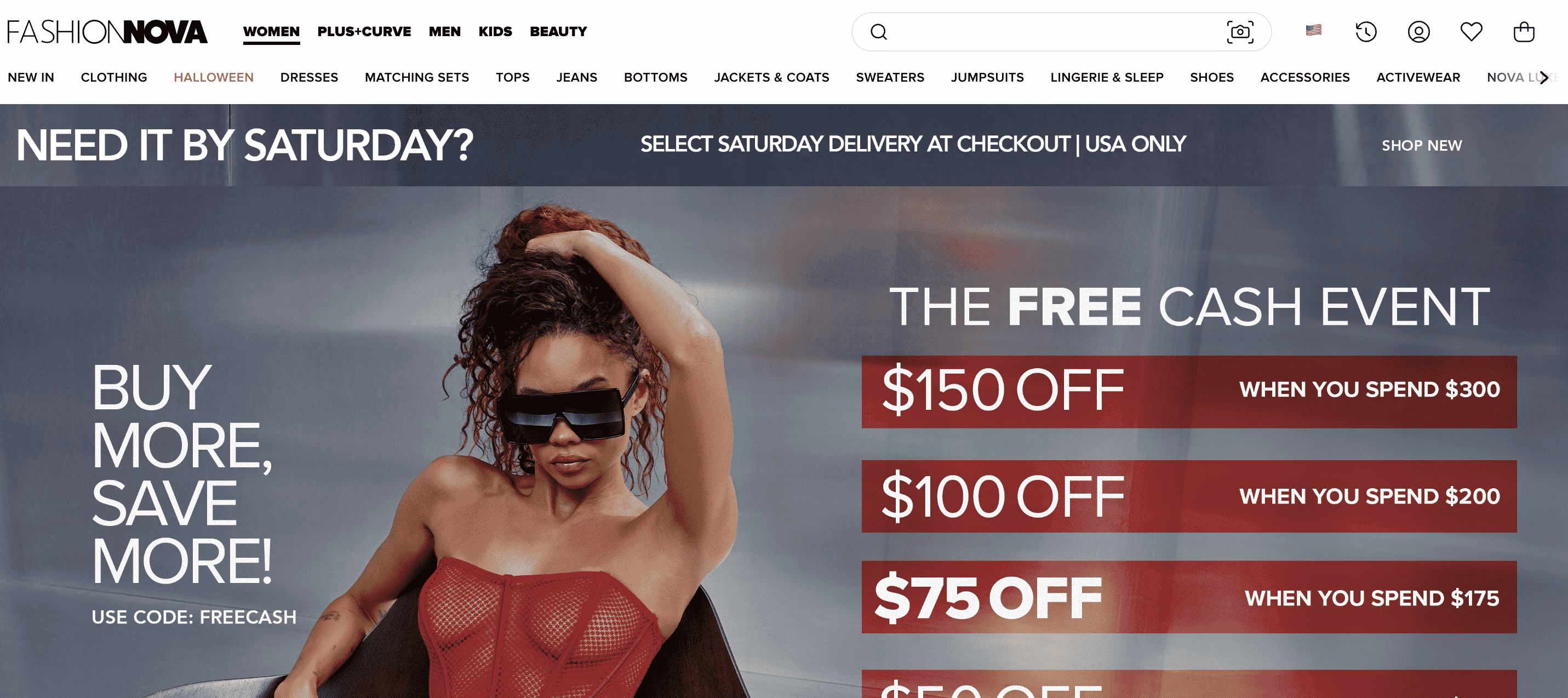
2. Warmly Decor (Home Decor Dropshipping Store))
Warmly Decor specializes in stylish and affordable home decor items, focusing on creating cozy living spaces.
Location: United States

3. Burga (Phone Accessories Dropshipping Store)
Burga focuses on stylish and customizable phone cases and accessories, appealing to fashion-conscious consumers.
Location: Europe (with global shipping)

4. Raycon Global (Electronics Dropshipping Store)
Raycon specializes in high-quality audio products, particularly wireless earbuds, marketed towards a youthful audience.
Location: United States
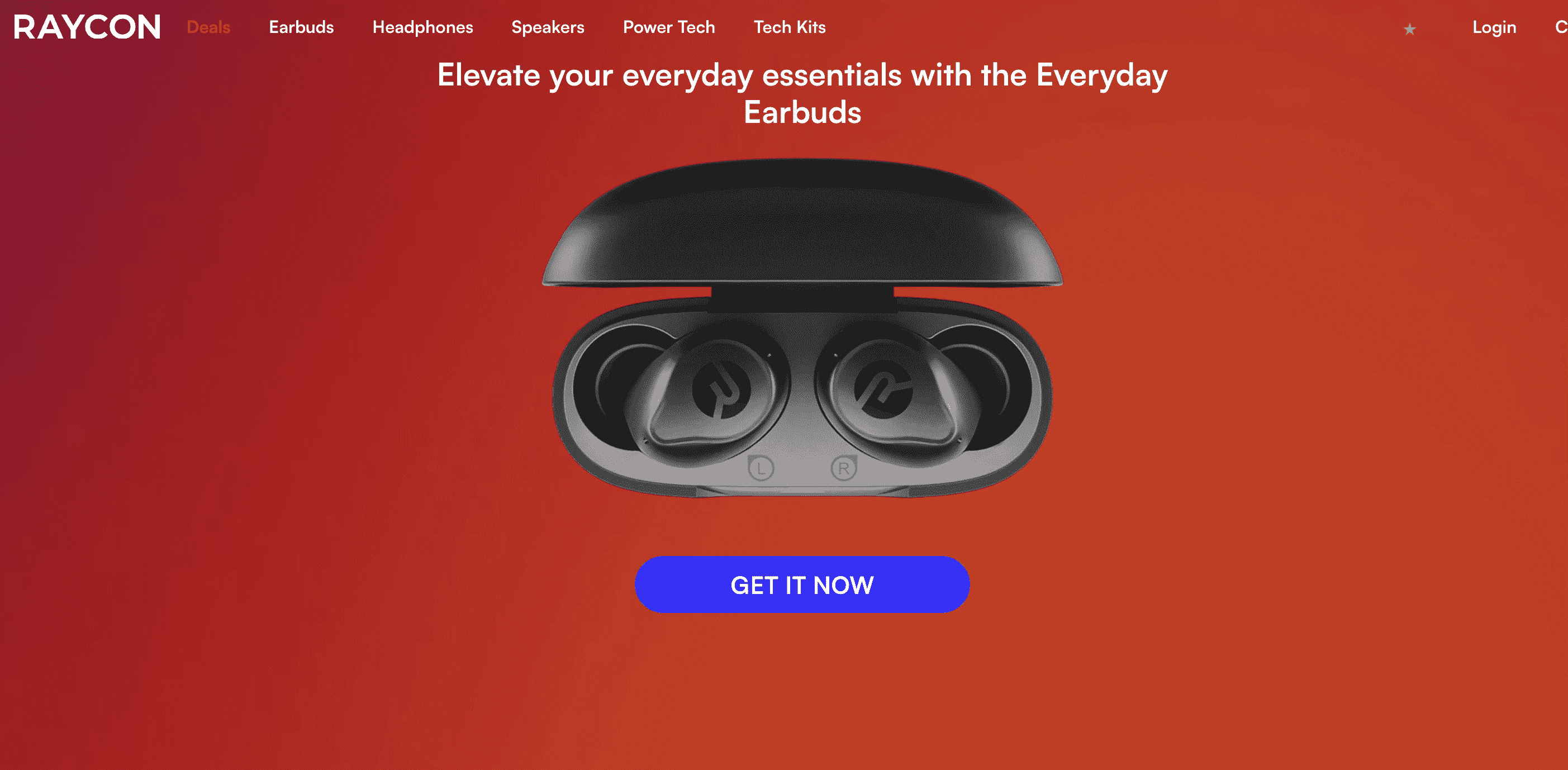
5. Jeffree Star Cosmetics (Cosmetics Dropshipping Store)
Founded by makeup artist and influencer Jeffree Star, this cosmetics brand features a range of makeup products.
Location: United States

Read more: Best Shopify Dropshipping Stores
Conclusion
Shopify dropshipping is a fantastic way to start an online business with low overhead costs and minimal risk. While there are challenges such as lower profit margins and reliance on suppliers, the potential rewards can be significant. Whether you're starting with a small niche store or aiming for a large-scale operation, following this guide will help you avoid common pitfalls and set yourself up for success. Ready to get started? Sign up for Shopify today and start building your dropshipping empire!
Read more:
